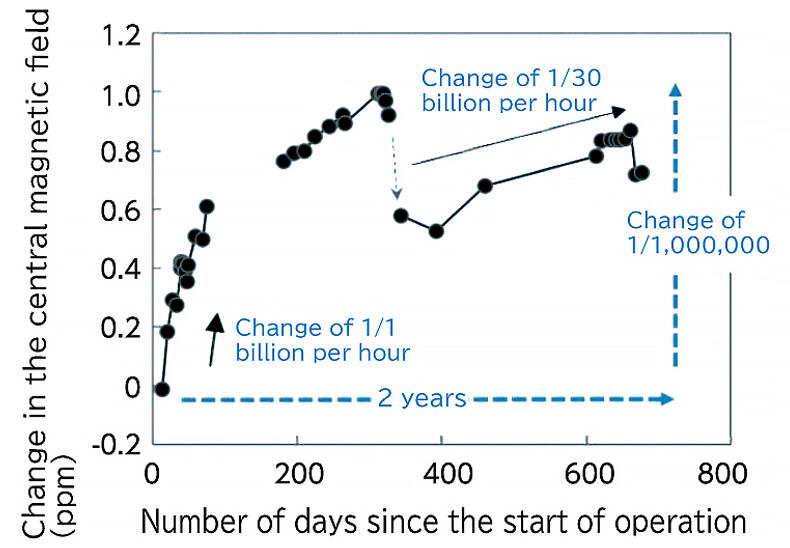The term "Persistent current" refers to the phenomenon in which electricity continues to flow through a coil without an external current supply in a superconducting state when the coil is cooled to an extremely low temperature and its electrical resistance becomes zero. NMR equipment, which analyzes the molecular structure and physical properties of materials, utilizes the strong magnetic field generated by this process. Rather than "low-temperature superconductivity," which represents a superconducting state at the temperature of liquid helium (-269 °C), wide practical application of "high-temperature superconductivity," which represents a superconducting state at the temperature of liquid nitrogen (-196 °C), is required. This is because high-temperature superconducting coils can generate much stronger magnetic fields than low-temperature superconducting coils can when cooled to liquid helium temperatures.
In 2018, the joint research group led by Yoshinori Yanagisawa at the RIKEN Center for Biosystems Dynamics Research became the first in the world to successfully develop an NMR device equipped with superconducting joints between high-temperature superconductors. By continually operating this device at a magnetic field of 400 megahertz for two years and recording precise measurements of the field, the team demonstrated for the first time that a stable persistent current could be maintained for a long period of time. The change in the magnetic field per hour continued to decrease with time, from 1/1 billion in 2018 to only 1/30 billion in the second year. This indicates that a magnetic field will continue to be generated for 3 million years without any current supply.
Based on the results of this study, the joint research group aims to develop an ultra-strong-magnetic-field device of 1.3 gigahertz, exceeding the 1.2 gigahertz that is currently the highest in the world. In addition, further development based on this research result could lead to the realization of a compact, highly versatile NMR device that does not use rare and expensive liquid helium.





